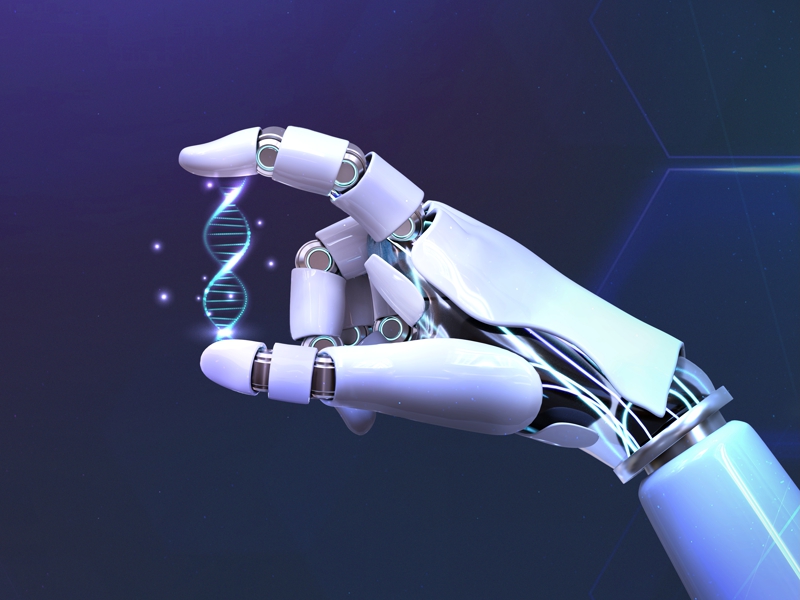The Pentagon’s R&D funding arm is looking to weaponize biohybrid robots: perspective
DARPA is looking for ideas on how to create a paradigm shift in biohybrid robots for military use that outperforms all others.
The US Defense Advanced Research Projects Agency (DARPA) wants to find out if synthetic and biological components can be integrated to enable biohybrid platforms that outperform traditional robotic systems, according to an Advanced Research Concepts (ARC) Opportunity announcement.
“Efforts should quantitatively explore emerging approaches in biohybrid robotics design that will drive a paradigm shift toward practical applications in demanding, complex environments”
DARPA, HyBRIDS, January 2025
Not yet reaching official research program status, DARPA’s Hybridizing Biology and Robotics through Integration for Deployable Systems (HyBRIDS) ARC Opportunity seeks “to address significant engineering and design obstacles that prevent the development of deployable biohybrid robotic systems by understanding and controlling the integration of synthetic and biological components to achieve desired emergent system properties.”
Biological components may include cells, tissues, or other organisms, including “muscle cells for movement, neurons for control, and sensory cells for touch,” according to Impact Lab.
While many commercial and academic groups that are creating biohybrid robotic systems say that they will be used to serve humanity, DARPA is looking to weaponize them to serve the Pentagon.
“Recent advancements in—coupled with the convergence of—engineering and biology have propelled the development of biohybrid robots, which combine biological and synthetic components”
DARPA, HyBRIDS, January 2025

“Successfully integrating biological components (e.g., cells, tissues, or organisms) could extend the functionality of robotic systems”
DARPA, HyBRIDS, January 2025
The HyBRIDS ARC opportunity seeks ideas to address the question: “How can synthetic and biological components be integrated to enable biohybrid platforms that outperform traditional robotic systems?”
Key technical challenges in this area that impede the advancement of biohybrid robotics, and are potential areas for research efforts include, but are not limited to:
- Biological component integration into robotic platforms. Moving beyond readily available and well-characterized biological materials requires innovation. Systematically assessing possible components and developing methods to modify biological materials to enhance system integration or other properties is necessary
- Robust design methods for integrating biological and synthetic materials. Improved computer-aided approaches are needed to represent, analyze, and predict the relationships between system- and component-level properties and performance.
- Approaches to achieve and quantitatively characterize interfaces. Methods should systematically measure performance over time to enable resilient multidirectional interfaces that transmit information, energy, load, and material.
- Techniques to overcome common deployment obstacles. Focusing on robust, repeatable strategies that elicit targeted emergent properties can help address at-scale shared needs, such as maintaining the operational integrity of biological components.
DARPA defines a biohybrid robot as “a scaffold equipped with actuators, sensors, and control mechanisms that enable it to interact with its surroundings in an autonomous or semi-autonomous fashion, achieved by merging functional, engineered components with biological materials and components.”
To get an idea of a practical application that has been under development, University of Tokyo researcher Shoji Takeuchi said at the 2019 World Economic Forum (WEF) Annual Meeting that his team was developing a biohybrid robot using mosquito sensors that could “smell” human sweat in order to find missing people following a natural disaster.
A human sweat smelling robot is just one application out of countless, and DARPA is looking to use this type of technology for military purposes.
The University of Tokyo has also been working giving biohybrid robots self-healing skin.
Another area of biohybrid robotics research concerns applying organic muscle tissue to a synthetic skeleton.
These biological materials have “the ability to sense and adapt to their environments in real time,” according to MIT researcher Ritu Raman.
“We have previously shown that muscle-powered robots can exercise and get stronger or heal from damage, showcasing their ability to dynamically respond to changing surroundings,” said Raman via Advanced Science News.
“Making biohybrid robots requires coupling muscles to skeletons to maximize movement and enable reproducible and efficient force transmission,” he added.
Last year, researchers at Cornell University discovered a way to control robots using electric signals from mushrooms.
“By harnessing mycelia’s innate electrical signals, the researchers discovered a new way of controlling ‘biohybrid’ robots that can potentially react to their environment better than their purely synthetic counterparts,” wrote David Nutt for the Cornell Chronicle.
“Biohybrid robots aim to combine the best features of both realms by leveraging the precise control of engineered parts while harnessing the unique, innate capabilities of biological elements”
DARPA, HyBRIDS, January 2025
With HyBRIDS, DARPA is looking for ways to exploit the “resiliency, sensitivity, adaptability, and efficiency” of biological systems to create the world’s most efficient biohybrid robots.
If and when HyBRIDS becomes a fully-funded research program, the results could lead to a paradigm shift in biohybrid robotics and how wars are fought.
Apart from military use, biohybrid robots show great promise in the medical field, in manufacturing, and a whole host of industries.
Researchers have recently developed a robotic stingray that is “a biohybrid blend of living, human-derived neurons and muscle cells controlled by a programmable electronic ‘brain.‘”
Imagine being an adversary of the Pentagon and seeing a robotic stingray with human neurons swimming your way.
How far are we from having “fricking sharks with fricking laser beams” attached to their heads?
Pop references from the 90s aside, what other types of applications could arise from a human sweat sniffing, drug detecting, self-healing, self-replicating, self-guiding, mushroom-powered robot using human-derived neurons and muscle cells?
After going through military use, could these biohybrid robots one day be patrolling our streets as law enforcement agents?
What it means to be human, and the definition of even life itself, is ever growing in complexity.
Image by rawpixel.com on Freepik











